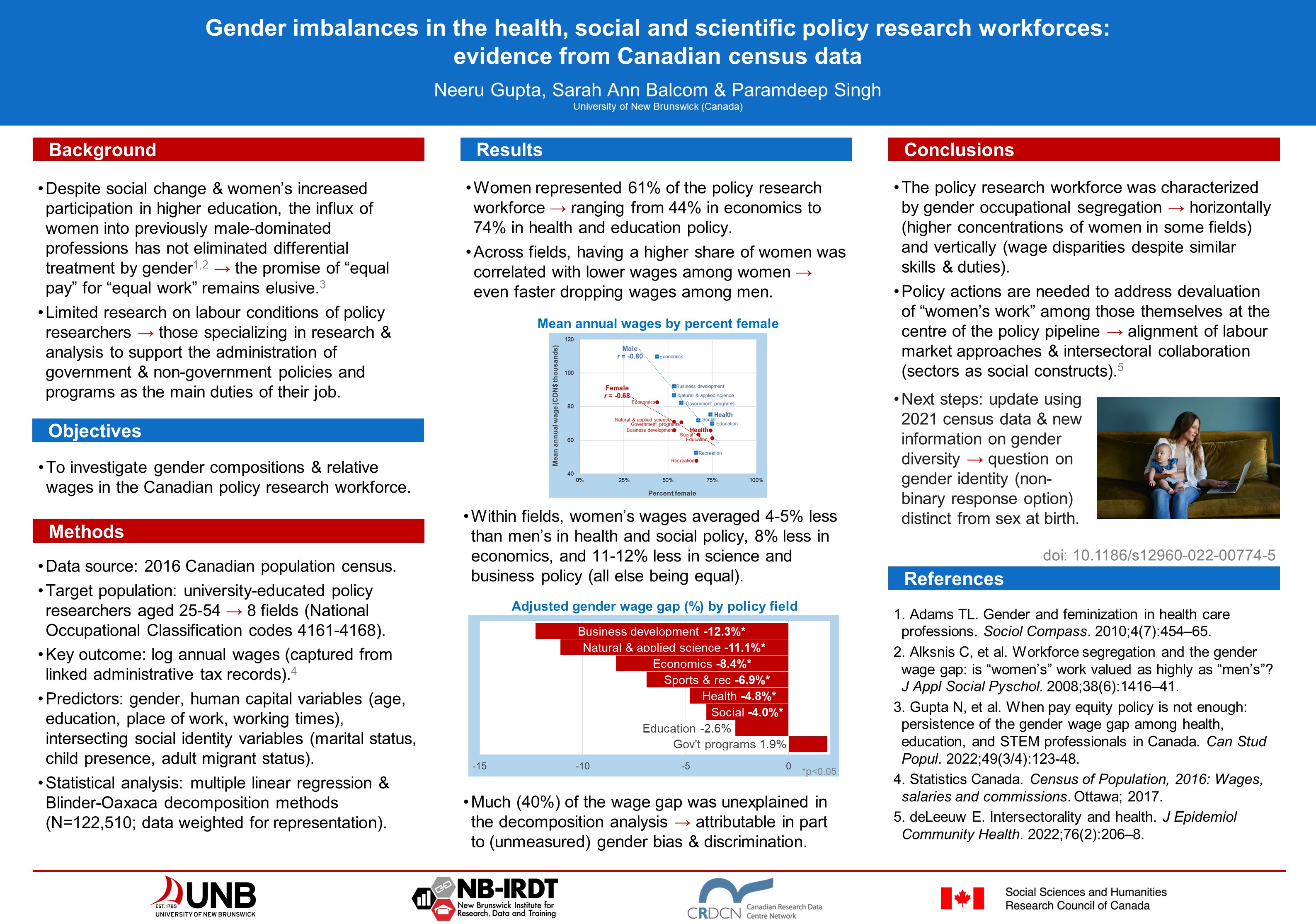Use of national population census data to decompose gender imbalances in the health, social and scientific policy research workforces
Conference
64th ISI World Statistics Congress - Ottawa, Canada
Format: CPS Poster
Keywords: census, gender, policy, workforce
Session: CPS Posters-06
Tuesday 18 July 4 p.m. - 5:20 a.m. (Canada/Eastern)

Abstract
Evidence of gender occupational segregation and wage discrimination has been documented in labour forces across countries at all levels of development. Research is limited on policy researchers, that is, those in the centre of the policy pipeline tasked with bridging information from health, socioeconomic and scientific programs to evidence-based advice for decision-making. This study leverages Canadian population census data to investigate gender compositions and wage conditions across eight policy and program research domains in government and non-government settings. The 2016 census collected detailed sociodemographic and labour market information in a mandatory long-form questionnaire; the response rate was 97.8%. Microdata from the 2016 round identified 122,510 university-educated policy researchers aged 25-54 as mapped to the National Occupational Classification, grouping occupations by similarities in job duties, skill requirements and working conditions.
Among the total policy research workforce, 60% were women; the composition ranged from 44% women for economics policy researchers, to 53% women in the natural and applied science policy domain, to 74% in health and in education policy domains. Perhaps not surprisingly, a significant gender wage gap was found, with women earning 8.1% (95% CI: 6.9‒9.2%) less on average annually than men, after adjusting for age, education, and other labour, social, and residential characteristics. Results from a pooled cross-domain log-linear regression presented significantly lower wages among health policy researchers (21% lower; p<0.05) than their counterparts in economics policy research, the only male-dominated occupation under observation. Moreover, Oaxaca-Blinder decomposition analyses showed, of the (observed) female‒male wage differential, 40% remained unexplained by the measured predictors. In other words, women’s earnings averaged around 3.2% less than men’s due to unexplained factors, an outcome that may be attributed, at least in part, to (unobserved) gender discrimination and other sociocultural and economic structures that hinder women’s labour market opportunities.
Moving forward, future analyses are anticipated to enhance knowledge of gender diversity in the policy research workforce using data from the 2021 census, which captured for the first time in Canada (or anywhere) gender identity as a non-binary construct, distinctly from biological sex at birth (not yet available for research use at the time of the study). Cross-national comparative analyses of the policy research workforce within and across domains are still hampered by a lack of alignment in certain concepts with the International Labour Organization’s International Standard Classification of Occupations (ISCO-08), which - perhaps related to greater emphasis on transferability of skills - aggregates at the lowest level of classification all those charged with researching and analyzing policy options. This work aims to pique interest and advance methodological considerations for more research on wage conditions in the policy research workforce using an intersectoral and gender-based analysis lens. Accountability for gender equity in labour markets must extend to the professionals tasked with conducting equity-informative policy research.
